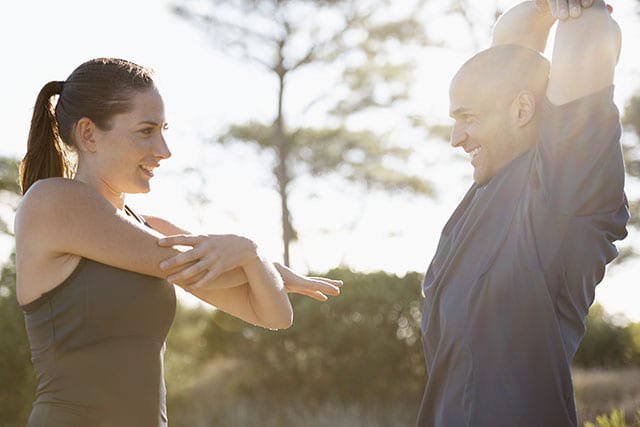The Beginner’s Quick Guide to Running
Every beginner runner has a list of frequently asked questions about what to do and how to do it when they first try running. Here are the basics.
Every beginner runner has a list of frequently asked questions about what to do and how to do it when they first try running. Here are the basics.

How do I get started?
Start walking for a length of time that feels comfortable – anywhere from 10 to 30 minutes.
Once you can walk for 30 minutes easily, sprinkle one- to two-minute running sessions into your walking.
As time goes on, make the running sessions longer, until you’re running for 30 minutes straight.
Get a beginner’s training programme here.
Is it normal to feel pain during running?
Some discomfort is normal as you add distance and intensity to your training. But real pain isn’t normal. If some part of your body feels so bad that you have to run with a limp or otherwise alter your stride, you have a problem.
Stop running immediately, and take a few days off. If you’re not sure about the pain, try walking for a minute or two to see if the discomfort disappears. If it persists, visit your doctor or physiotherapist.
Do I have to wear running shoes, or are cross-trainers fine?
Running doesn’t require much investment in gear and accessories, but you have to have a good pair of running shoes.
Unlike cross-trainers, running shoes are designed to help your foot strike the ground properly, reducing the amount of shock that travels up your leg. They’re also made to fit your foot snugly, which reduces the slipping and sliding that can lead to blisters.
Here’s how to determine which is the right shoe for you, or visit a specialty running store to find the right shoe for you.
What’s the difference between running on a treadmill and running outdoors?
A treadmill “pulls” the ground underneath your feet, and you don’t face any wind resistance, both of which make running somewhat easier. Many treadmills are padded, making them a good option if you’re carrying a few extra kilograms or are injury-prone and want to decrease impact.
To better simulate the effort of outdoor running, you should always set your treadmill at a one-percent incline.
Think the treadmill is boring? Shake things up! Try one of these treadmill workouts.
Where should I run?
You can run anywhere that’s safe and enjoyable. The best running routes are scenic, well lit, free of traffic and well populated. Think of running as a way to explore new territory.
Use your watch to gauge your distance, and set out on a new adventure on each run. Ask other runners about the best local routes.
I always feel out of breath when I run. Is something wrong?
Yes, you’re probably trying to run too fast.
Relax.
One of the biggest mistakes beginners make is to run too fast. Concentrate on breathing from deep down in your belly, and if you have to, take walking breaks.
I often suffer from a side stitch when I run. Will these ever go away?
Side stitches are common among beginners because your abdomen is not used to the jostling that running causes. Most runners find that stitches go away as fitness increases.Also, don’t eat any solid foods during the hour before you run.
When you get a stitch, breathe deeply, concentrating on pushing all of the air out of your abdomen. This will stretch out your diaphragm muscle (just below your lungs), which is usually where a cramp occurs.
Should I breathe through my nose or my mouth?
Both. It’s normal and natural to breathe through your nose and mouth at the same time. Keep your mouth slightly open, and relax your jaw muscles.
READ MORE ON: beginners

